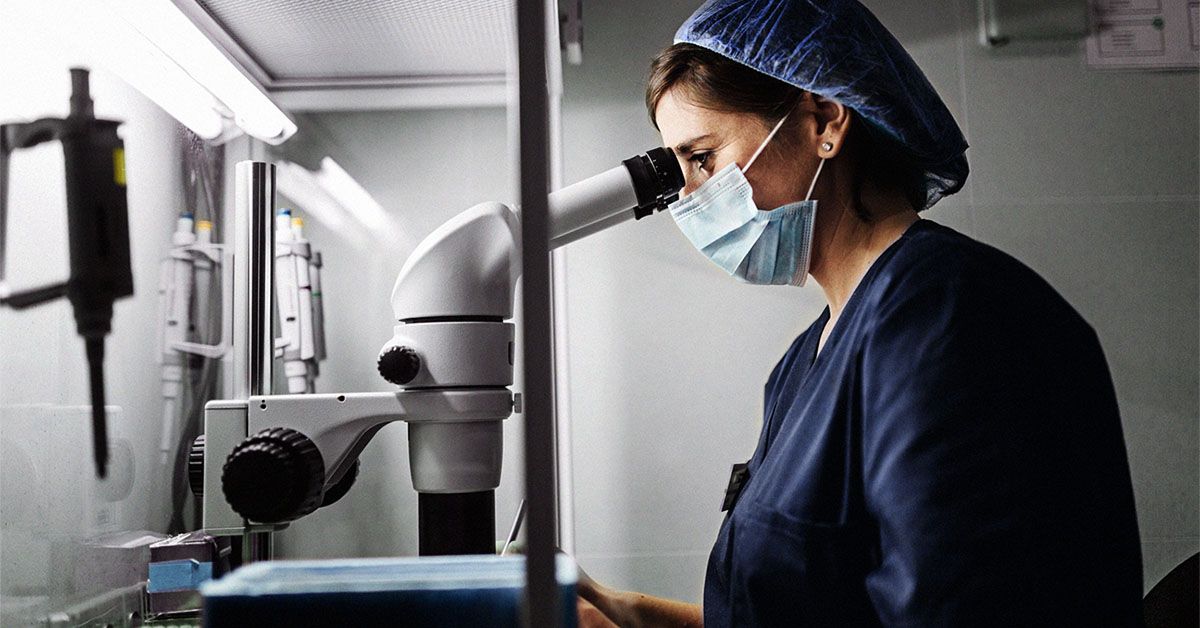- Breast cancer is the most common cancer in women worldwide, and can, rarely, also occur in men.
- There are many different types of breast cancer, of which triple-negative breast cancer is one of the hardest to treat.
- A new cell study has identified two inhibitors that, when used together, make triple-negative breast cancer cells revert to a state where they can be more easily destroyed.
- The researchers suggest that their findings should be confirmed in clinical trials to determine whether they could form the basis of a new treatment for this hard-to-treat type of breast cancer.
According to the American Cancer Society, 1 in every 8 women in the United States will develop breast cancer at some time in their life, with most cases occurring in women over the age of 50. The good news is that although the incidence of breast cancer is rising, fewer people are dying of the disease, due to widespread screening and more effective treatments.
Some forms of breast cancer, however, are still hard to treat. One of these — triple-negative breast cancer (TNBC) — is an aggressive type of breast cancer that tends to grow and spread rapidly, and has a worse prognosis than other breast cancers.
Ben Atkinson, head of research communications at Breast Cancer Now, told Medical News Today:
“Each year around 8,000 UK women are diagnosed with triple-negative breast cancer. It’s usually more aggressive and has a higher risk of coming back and spreading than some other breast cancers, particularly in the first few years.”
TNBC is hard to treat because, unlike many other breast cancers, the tumor cells do not have estrogen or progesterone receptors, and do not make a protein called HER2. They, therefore, do not respond to hormone therapy or anti-HER2 drugs that are used to combat other forms of breast cancer.
Now, a study from Mass General Brigham has found that a combination of two types of therapeutic agents can selectively kill these breast cancer cells, raising hopes that this may lead to a new treatment for triple-negative breast cancer.
The study is published in Nature.
“This study has a unique origin story – firmly rooted in support for basic research and collaboration. Supported by Cancer Research UK and The Mark Foundation through the Cancer Grand Challenges program, a global team of researchers explored key questions about cancer biology over five years. Their findings led to a novel combination of AKT and EZH2 inhibitors, grounded in a deep understanding of the pathways driving cancer growth. Many combo therapies are chosen without having a good theory of why they should work well together, but this team started with the basics, and it paid off.”
— Ryan Schoenfeld, CEO of The Mark Foundation for Cancer Research
In this cell study, the researchers targeted two proteins —AKT and EZH2 — both of which are involved in the growth and proliferation of cells. Overexpression of these proteins can result in the formation of cancerous tumors.
Inhibiting AKT alone is effective in treating some forms of breast cancer, but not triple negative. EZH2 inhibitors, such as tazemetostat, which was approved by the FDA in 2020, have shown promise against certain lymphomas in clinical trials. However, neither has so far proven effective against triple-negative breast cancer.
Karen Cichowski, PhD, senior author, Professor of Medicine/Genetics at Brigham and Women’s Hospital, explained the research to MNT:
“By combining 2 inhibitors – that suppress AKT and EZH2 — we induced the triple-negative cancer cells to differentiate into a state in which they could then be destroyed by these agents.”
“When therapies fail it is often because cancer cells can shift to a more ‘primitive’ drug-resistant state (or there are some primitive cells within the tumor to begin with). This drug combination shifts cells away from this primitive state and then ‘locks’ them into a state where these drugs can now kill them,” she added.
When the researchers treated isolated TNBC cell lines with a combination of AKT and EZH2 inhibitors, the number of cells was greatly reduced within four days.
Schoenfeld, whose organization supported the study, told MNT why he was optimistic about the findings:
“This research is especially hopeful following the recent failure of Truqap, a targeted therapy that had disappointing clinical trial results. It also offers a new hypothesis on why combining an epigenetic inhibitor with AKT could succeed where AKT inhibition plus chemotherapy failed, supported by compelling preclinical data.”
Having found that the combined treatment killed around 60% of the cells in their cultures, the researchers used machine learning to identify what made some TNBC cells more vulnerable to the therapy than others.
Using this approach, they worked out how to identify individuals with tumors that are most likely to respond.
“AI and machine learning are becoming essential for identifying patients most likely to respond to new combination therapies, as they can uncover patterns where traditional biomarkers fall short. This targeted approach not only enhances the chance of clinical trial success but also ensures the right drug reaches the right patients.”
“Patients with TNBC, like all cancer patients, have two deep unmet needs – to live longer, and to have a better quality of life. The promise of a more effective therapy that could potentially spare patients from the devastating side effects of chemotherapy is a game-changer.”
— Ryan Schoenfeld
Cichowski told MNT that as well as their cell culture studies, they also evaluated the drugs in patient-derived xenografts and several other mouse tumor models, seeing dramatic tumor regression in all cases, adding:
“These findings provide strong support for developing a clinical trial in humans.”
Atkinson agreed: “Novel treatment strategies like this are essential in tackling this form of the disease, which currently has few treatment options.”
“We look forward to reviewing further evidence to better understand if this could be a potential treatment option in the future and stop people dying from this devastating disease,” he added.



